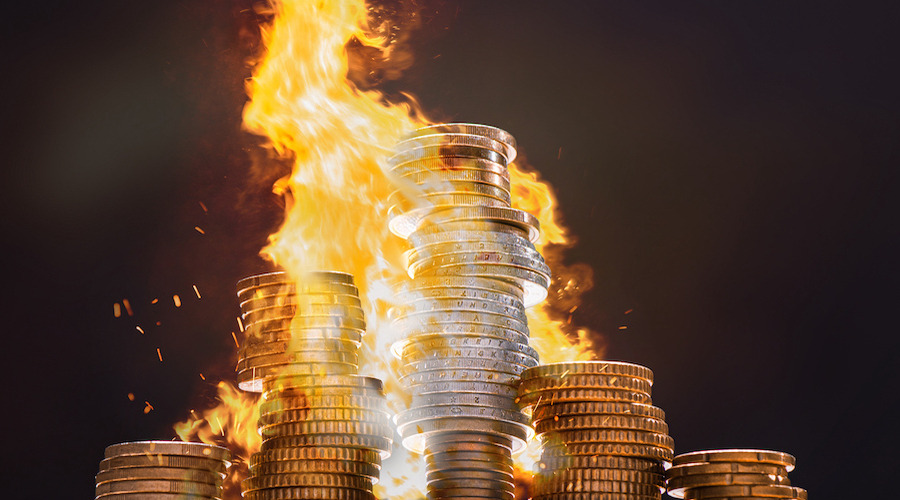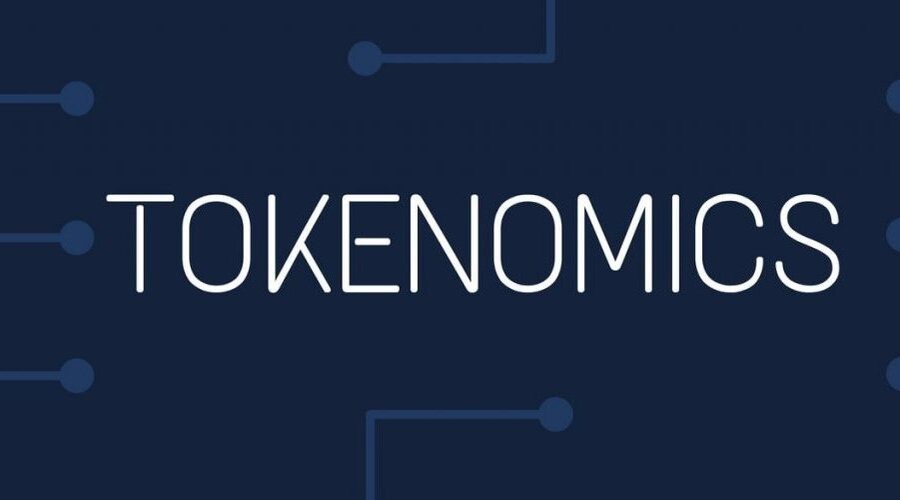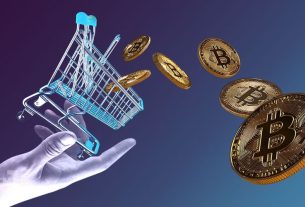In the world of cryptocurrency, tokenomics plays a crucial role in determining the success and value of a digital asset. One important aspect of tokenomics is the concept of “coin burning.” In this article, we will explore the role of coin burning in tokenomics, its benefits, mechanisms, and its impact on the token’s value and ecosystem.
Introduction
Before delving into coin burning, let’s briefly understand what tokenomics entails. Tokenomics refers to the economics and mechanics behind a digital token or cryptocurrency. It encompasses various factors such as token distribution, supply and demand dynamics, utility, and governance. Coin burning, on the other hand, is a specific mechanism within tokenomics that involves the permanent removal of a certain number of tokens from circulation.
What is Coin Burning?
Coin burning, also known as token burning, refers to the intentional and irreversible destruction of a certain number of tokens. This process is usually carried out by the token issuer or project team. The purpose of coin burning can vary depending on the project’s objectives. It is typically done to create scarcity, increase the value of the remaining tokens, and enhance investor confidence.
There are different methods through which coin burning can be executed. One common approach is the Proof-of-Burn mechanism, where tokens are sent to an unspendable address, rendering them inaccessible forever. Another method is the Buyback and Burn, where the project team repurchases tokens from the market and subsequently destroys them. Token Locking and Burning is another approach, where tokens are locked in a smart contract and become unspendable. Lastly, Community Governance and Burning involve allowing token holders to collectively decide on token burning through voting or consensus mechanisms.
Benefits of Coin Burning
- Reducing Token Supply: One of the primary benefits of coin burning is the reduction of token supply. By permanently removing tokens from circulation, coin burning creates scarcity. With a lower supply of tokens available, the remaining tokens become more valuable. This can potentially lead to an increase in the token’s price, benefiting token holders.
- Increasing Scarcity and Value: Coin burning enhances scarcity, which can have a positive impact on token value. When the supply of tokens decreases, but demand remains constant or increases, the limited availability can create a sense of exclusivity and drive up the token’s value. This can attract investors and contribute to price appreciation.
- Building Investor Confidence: Coin burning can foster investor confidence in a cryptocurrency project. By implementing a strategic coin burning mechanism, projects demonstrate a commitment to the token’s long-term success. This commitment can inspire trust and confidence among investors, potentially attracting more interest and participation in the project.
- Aligning with Tokenomics Objectives: Coin burning aligns with certain tokenomics objectives. It helps manage token supply and demand dynamics, ensuring a balance that can benefit both the project and its stakeholders. By reducing the supply, coin burning can support the token’s overall ecosystem and create an environment conducive to sustainable growth.
- Enhancing Project Credibility: Coin burning initiatives can enhance the credibility of a cryptocurrency project. The deliberate act of permanently removing tokens from circulation showcases a responsible approach to managing the token’s value. This responsible behavior can positively influence the project’s reputation, attracting more attention from investors, partners, and the broader community.
Coin Burning in Tokenomics
Coin burning has become a popular practice in many cryptocurrency projects. It serves as a strategic tool for managing the token’s supply and maintaining a balance between supply and demand. Successful coin burning initiatives have been implemented by projects such as Binance (BNB), where a portion of the exchange’s quarterly profits are used to buy back and burn BNB tokens, reducing the overall supply.
Coin Burning Mechanisms

Several mechanisms exist for executing coin burning. The Proof-of-Burn mechanism involves sending tokens to an address where they are made unspendable, providing proof of their destruction. The Buyback and Burn mechanism entails using funds to buy tokens from the market, followed by their permanent removal. Token Locking and Burning involves locking tokens in a smart contract and rendering them unspendable. Community Governance and Burning allow token holders to collectively decide on token burning through voting or consensus mechanisms.
Impact of Coin Burning on Token Price
The impact of coin burning on the price of a token can be significant. Coin burning is a deliberate strategy employed by cryptocurrency projects to reduce the token supply, thereby increasing scarcity and potentially driving up the token’s value.
When tokens are burned, they are permanently removed from circulation. This reduction in supply creates a supply-demand imbalance, as the number of available tokens decreases while the demand remains constant or even increases. As a result, the scarcity of the remaining tokens increases, which can lead to an appreciation in their value.
Moreover, the act of coin burning often sends a positive signal to the market. It demonstrates the project team’s commitment to the token’s long-term success and can foster investor confidence. This increased confidence, combined with the reduced token supply, can generate positive market sentiment and contribute to upward price movements.
However, it is important to note that the impact of coin burning on token price is not guaranteed. Market dynamics, investor sentiment, and other external factors can also influence the token’s price. Additionally, the effectiveness of coin burning as a price catalyst may vary depending on the specific circumstances of each project.
Potential Risks and Considerations
Here are some key points to consider:
- Balancing Token Burning with Utility: Coin burning should be balanced with the utility and purpose of the token. While reducing token supply can increase scarcity and potentially drive up value, it is crucial to ensure that the token maintains its functionality and utility within the project’s ecosystem. Token burning should not compromise the token’s intended use or hinder its adoption.
- Regulatory Challenges: Coin burning initiatives may face regulatory challenges in certain jurisdictions. Each jurisdiction has its own laws and regulations regarding cryptocurrencies, and projects must comply with these regulations to avoid legal issues. It is essential to consult legal experts and ensure compliance with relevant regulations to mitigate any potential risks.
- Investor Perception: Coin burning can have a significant impact on investor perception and market sentiment. While it can instill confidence and create positive sentiment, it is also important to communicate the purpose and benefits of coin burning transparently to investors and the community. Clear communication can help mitigate any potential misunderstandings or negative perceptions.
- Market Reaction: The market’s reaction to coin burning can be unpredictable. While some investors may perceive it positively and anticipate an increase in token value, others may have different expectations or concerns. It is important to consider the broader market dynamics, investor sentiment, and potential reactions when implementing coin burning initiatives.
- Long-Term Implications: Projects should consider the long-term implications of coin burning on the token ecosystem. Coin burning should align with the project’s overall vision and goals, ensuring a sustainable and healthy growth trajectory. It is crucial to evaluate the potential effects on token liquidity, distribution, and overall project viability in the long run.
Coin Burning and Sustainable Growth
Coin burning is not just about short-term price appreciation but also about ensuring sustainable growth for a cryptocurrency project. By strategically managing token supply and demand dynamics, projects can create a foundation for long-term success. This includes finding the right balance between burning tokens and providing utility and incentives for token holders.
Coin Burning vs. Token Distribution
It is essential to differentiate between coin burning and token distribution. While coin burning focuses on reducing token supply, token distribution refers to the process of allocating tokens to different stakeholders. Both mechanisms play vital roles in tokenomics, and finding the right balance between them is key to achieving project objectives.
Conclusion
Coin burning is a fundamental aspect of tokenomics that contributes to the value and sustainability of a cryptocurrency project. By reducing token supply, increasing scarcity, and building investor confidence, coin burning plays a vital role in shaping the token’s ecosystem. However, it is important for projects to consider the potential risks, regulatory challenges, and the long-term implications of coin burning in order to create a healthy and sustainable environment for their tokens.
FAQs
Is coin burning permanent?
Yes, coin burning is a permanent process. Once tokens are burned, they cannot be recovered or reintroduced into circulation.
How does coin burning affect the total supply of tokens?
Coin burning reduces the total supply of tokens by permanently removing them from circulation, which can increase the scarcity and value of the remaining tokens.
Can coin burning eliminate all risks associated with a token?
Coin burning can mitigate some risks and enhance investor confidence, but it cannot eliminate all risks associated with a token. Other factors such as market conditions and project fundamentals also play a significant role.
Are there any legal implications of coin burning?
Depending on the jurisdiction, there may be legal considerations and compliance requirements associated with coin burning. Projects should consult legal experts to ensure they adhere to relevant regulations.
How can investors benefit from coin burning?
Investors can potentially benefit from coin burning through increased token value and scarcity. If a project successfully implements coin burning, it can create a positive impact on the token’s price and overall ecosystem.
I’m a best-selling author and leading authority in the world of cryptocurrency. I have been involved in the crypto community since 2012 and have helped numerous startups and organizations on blockchain strategy. I am a regular contributor to Forbes and CoinDesk, and my work has been featured in The Wall Street Journal, Bloomberg, Reuters, and other major media outlets. In addition to writing for publications, I am also a sought-after speaker on cryptocurrency and blockchain technology niches respectively.




